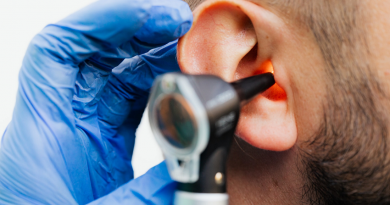The Human Genome Project: Celebrating its successes
The Human Genome Project was one of the great scientific achievements in history—an international research effort to sequence and map the human genome.
In 1998, the Baylor College of Medicine Human Genome Sequencing Center was chosen by the National Human Research Institute as one of the three centers to finish the sequencing of the human genome.
Take a look at major milestones that led up to the completion of the Human Genome Project, and exciting happenings since then.
Genome Milestones
 1971: Dr. Arthur Beaudet and Dr. C. Thomas Caskey join BCM.
1971: Dr. Arthur Beaudet and Dr. C. Thomas Caskey join BCM.
1985: Institute of Molecular and Human Genetics is created.
1990: The International Human Genome Project officially begins.
1991: Major gene discoveries at Baylor College of Medicine begin.
1994: Institute of Molecular and Human Genetics renamed Department of Molecular and Human Genetics.
1994: Dr. Caskey departs, and Dr. Beaudet is named chair.
1996: Human Genome Sequencing Center at BCM is established.
1998: Baylor College of Medicine Human Genome Sequencing Center chosen by National Human Genome Research Institute as one of the three centers to finish the sequencing of human genome.
2000: Human Genome Project leaders and President Clinton announce the completion of a working draft DNA sequence of the human genome.
2000: Fruit fly genome sequenced.
2003: Human Genome Project declared complete, with BCM Sequencing Center taking a major role.
2005: Dr. Gad Shaulsky and Dr. Adam Kuspa sequence the genome of the social amoeba.
2006: Dr. James Lupski and colleagues begin to lay out the case for copy number variation.
2006: The National Cancer Institute and NHGRI announce the first three cancers—lung, brain and ovarian—that will be studied in the pilot phrase of The Cancer Genome Atlas.
2007: Dr. James Watson’s genome is sequenced and presented to him at BCM.
2008: Genomes of common form of lung cancer and glioblastoma sequenced in effort led by Baylor College of Medicine Human Genome Sequencing Center.
2008: International research consortium announces 1000 Genomes Project, an effort to sequence the genomes of at least 1000 people from around the world to create the most detailed illustration of human genetic variation.
2010: Dr. Lupski and Dr. Gibbs sequence Dr. Lupski’s genome to find the form of Charcot-Marie-Tooth disease that affects him and his family.
2011: A report in Science Translational Medicine describes how the sequencing of twins Noah and Alexis Beery’s genome helped treat their disorder.
2014: Baylor, Texas Children’s join national collaboration to solve most difficult, rare medical cases.
2015: Team at Baylor College of Medicine successfully performs surgery on a human genome, changing how it is folded inside the cell nucleaus.
2016: Center for Genome Architecture explores 3-D structure of DNA.
2017: Scientists assemble Zika virus mosquito genome from scratch.
>> $3.3M effort to map human genome’s intricate folding pattern.
>> Baylor Genetics launches PreSeek™ – 1st non-invasive prenatal multi-gene sequencing screen.
>> Baylor’s Human Genome Sequencing Center looks to bring adult whole genome sequencing to clinical space with unprecedented NHLBI grant.
Additional Resources
- Read the latest in genome sequencing at Baylor.
- Learn more about DNA Day from the National Institute of Health’s National Human Genome Research Institute.




Pingback: For Dr. Beaudet: A tribute in song (and cups) | Momentum - The Baylor College of Medicine Blog